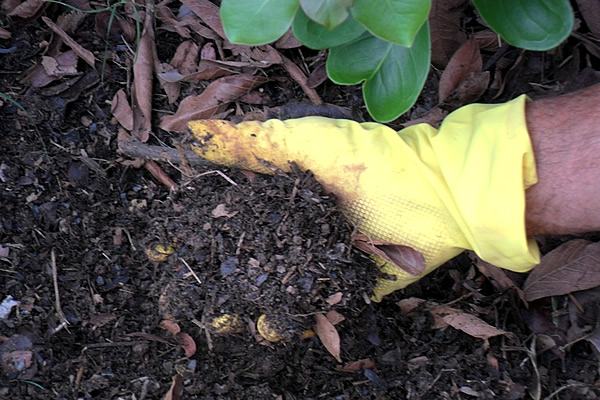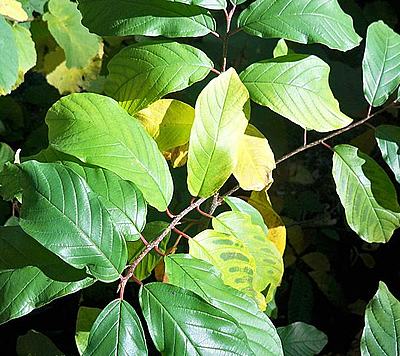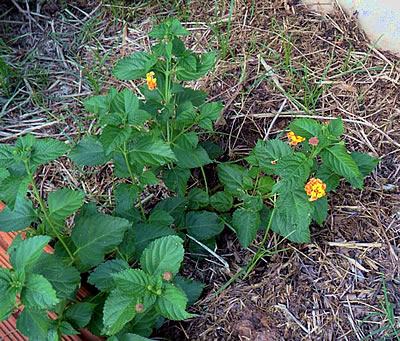
When preparing the soil for a garden, vegetable plot, or orchard, fertilization is usually the first thing that comes to mind. This is typically done with macronutrients like nitrogen, phosphorus, and potassium, as well as lime as a source of calcium and magnesium. But what about micronutrients?
The term “micronutrients” doesn’t imply that these are small nutrients. Rather, it signifies that plants require them in small quantities. Just to give you an idea, their quantities are often measured in parts per million (ppm). Fifty ppm equals 50 grams per metric ton of soil (or 50 pounds per 2,204 pounds of soil). For practical understanding, think of micronutrients as what vitamins are to humans. The essential micronutrients (those that are crucial) include zinc (Zn), copper (Cu), iron (Fe), manganese (Mn), molybdenum (Mo), boron (B), cobalt (Co), and chlorine (Cl). Elements like sodium (Na), silicon (Si), aluminum (Al), and nickel (Ni) are considered beneficial.
Micronutrients play a pivotal role in plant health. Deficiency symptoms are often mistaken for diseases. They need to be in balance with macronutrients. For instance, a lack of copper can lead to symptoms resembling nitrogen excess. It’s not that nitrogen has increased, but rather copper has decreased. This translates to excessive, somewhat uncontrolled growth in plants, making them weak, dark green, and susceptible to pests and diseases. Hence, nitrogen and copper need to be in equilibrium. In our soils, the most common deficiencies are in boron (B), cobalt (Co), and zinc (Zn). Of course, depending on soil type, crops, and care, deficiencies in other micronutrients might occur.
Symptoms of Micronutrient Deficiencies:
Boron: Deficiency leads to deformed tips of leaves, as well as drying of terminal buds and lateral shoots.
Chlorine: Wilting of shoots and leaf tips, chlorosis (discolored spots), reduced leaf growth, and eventual bronzing. Corrected using potassium chloride.
Copper: New leaves become elongated, deformed, with discolored and downward-curled margins.
Iron: Leaves turn very light green, with a narrow green band along veins, initially on younger leaves. Leaves appear glassy, transparent, and twisted.
Manganese: Reduced productivity and overall plant vigor. Discolored spots appear between leaf veins. In severe cases, the entire plant can lose color.
Molybdenum: Older leaves take on a yellowish tone. Marginal leaf necrosis can also occur.
Zinc: Deficiency leads to leaf atrophy, internode shortening, and the appearance of “tufted” leaves at branch tips.

To address these potential deficiencies, specific micronutrients are available. For boron, deficiency can be corrected using a borax solution – 10 grams per 10 liters of water for spraying. Zinc deficiency can be corrected by spraying zinc sulfate at 0.6%, i.e., 6 grams per 1 liter of water. For each deficiency, you can use a specific fertilizer, preferably under the guidance of an agronomist. There are also complete fertilizers designed to correct and fulfill overall micronutrient needs.
However, a well-balanced organic fertilization, coupled with proper soil care, prevents the majority of these deficiencies. A well-made compost, containing at least three different materials, practically encompasses all essential macro and micronutrients. Alternating the use of well-aged bovine and poultry manure also greatly enriches the soil.
Use pesticides sparingly and always under agronomist guidance, especially when applying them to a vegetable garden or orchard that provides food for your family. Remember, insecticides don’t just kill unwanted insects, but “all” insects, including crucial pollinators like bees. Avoid herbicides as well. In home gardens, they are seldom necessary. It’s much more worthwhile to remove weeds manually with your hands or a hoe, rather than applying herbicides to control a few unwanted plants. Even the so-called “safe” fungicides can cause imbalances in the soil and cumulative health effects.

Strive to keep your soil covered, either with live cover crops or mulching. Soils covered with dried leaves or any type of mulch contain an acceptable level of zinc, as this micronutrient remains in the upper soil layers. Moreover, mulching controls soil pH. Acidic soils tend to neutralize with this cover.
Climate Considerations:
Climate considerations play a crucial role in plant cultivation and the availability of micronutrients in soils across various regions, such as the United States, Canada, Australia, and the United Kingdom. Each of these countries has distinct climates that directly influence nutrient absorption by plants and the distribution of micronutrients in the soil.
In the United States, for instance, the remarkable climatic diversity ranges from tropical regions to colder temperate climates. In areas like California, with a Mediterranean climate, water availability can impact micronutrient absorption, especially in sandy soils. Conversely, in wetter regions like the East Coast, nutrient leaching due to frequent rains can affect micronutrient concentrations in the soil.
In Canada, where seasons are well-defined, micronutrient availability can vary significantly throughout the year. During winter months, soil biological activity decreases, which can influence the release of essential nutrients. Furthermore, northern regions may face limited sunlight, affecting plants’ ability to undergo photosynthesis and consequently absorb nutrients.
In Australia, the variable climate, including arid and semi-arid areas, can lead to soils with low water and nutrient retention. This can present challenges in micronutrient availability, especially in poorer, drier soils. Irrigation and fertilization practices need to be adapted to cope with the varying climatic conditions.
In the United Kingdom, the maritime temperate climate can influence soil acidity due to frequent rainfall. Acidic soils can affect the availability of micronutrients such as zinc and iron to plants. Seasonality also plays a significant role, with damp winters and drier summers impacting nutrient dynamics in the soil.
Across all these regions, considering climate specifics is crucial when planning micronutrient management. Soil analysis, choosing appropriate fertilizers, and cultivation practices tailored to the local climate are essential to optimize plant health and ensure proper micronutrient absorption, resulting in healthier and more abundant harvests or simply a healthier and protected garden.
Here in Brazil, I personally maintain my soil covered by native vegetation, and when unavailable, I use dried leaves in plant beds. I don’t face significant pest issues. Occasionally, a plant might suffer minor attacks, but nothing requiring immediate or drastic action.
So there you have another tip. Let’s treat our soil with care, as it’s a valuable resource. Many focus on caring for the plant when the soil is what truly needs attention. When the soil is healthy, the plants will thrive as well.
Wishing you successful cultivation and bountiful harvests.
Frequently Asked Questions
1. What are micronutrients?
– Micronutrients are essential elements needed in small quantities for healthy plant growth. They play vital roles in plant metabolism and functions.
2. What are the essential micronutrients for plants?
– Essential micronutrients include zinc (Zn), copper (Cu), iron (Fe), manganese (Mn), molybdenum (Mo), boron (B), cobalt (Co), and chlorine (Cl). Other elements like sodium (Na), silicon (Si), aluminum (Al), and nickel (Ni) are considered beneficial.
3. How do micronutrients affect plants?
– Micronutrients are crucial for various plant functions, such as enzyme production, photosynthesis, and protein synthesis. Deficiencies can lead to symptoms like leaf deformities, wilting, discoloration, and low productivity.
4. What are common symptoms of micronutrient deficiency?
– Symptoms vary for each micronutrient. For example, boron deficiency can cause tip deformities in leaves, while iron deficiency results in very pale leaves with green edges.
5. How can I correct micronutrient deficiencies?
– To correct deficiencies, you can use specific fertilizers containing the necessary micronutrients. Consult an agronomist for guidance on the best products and application methods.
6. How can I prevent micronutrient deficiencies?
– Maintain well-balanced soil, adopt crop rotation practices, use composting, and avoid excessive fertilizer use. Regular soil tests can help identify potential deficiencies.
7. What foods contain micronutrients?
– Foods like legumes, nuts, seeds, fruits, and vegetables are good sources of micronutrients for humans. However, the availability of these nutrients in plants depends on the soil they’re grown in.
8. What’s the importance of balancing micronutrients and macronutrients?
– Balancing micronutrients and macronutrients is crucial for healthy plant growth. Deficiencies or excesses of one nutrient can affect the absorption and utilization of other nutrients.
9. Do micronutrients impact the environment?
– Yes, excessive use of micronutrient-containing fertilizers can lead to soil and water contamination. It’s important to follow fertilizer application recommendations responsibly.
10. How do I identify if my plant has micronutrient deficiency?
– Observe signs like discoloration, deformities, wilting, or abnormal leaf growth. Conducting soil tests and consulting experts can also aid in accurate identification.
11. How do micronutrients affect ornamental plants and gardens?
– Micronutrients play a pivotal role in shaping the health and vitality of ornamental plants. These essential elements, such as zinc, iron, and manganese, are required in small quantities but are indispensable for fundamental physiological processes. Micronutrients are critical for various aspects of ornamental plants’ growth, including enzyme activation, chlorophyll formation, and overall metabolic functions. A deficiency or imbalance of micronutrients can manifest as stunted growth, discolored foliage, and reduced flowering. Therefore, ensuring an adequate supply of micronutrients through proper fertilization and soil management is essential to cultivate vibrant and visually appealing ornamental plants.





